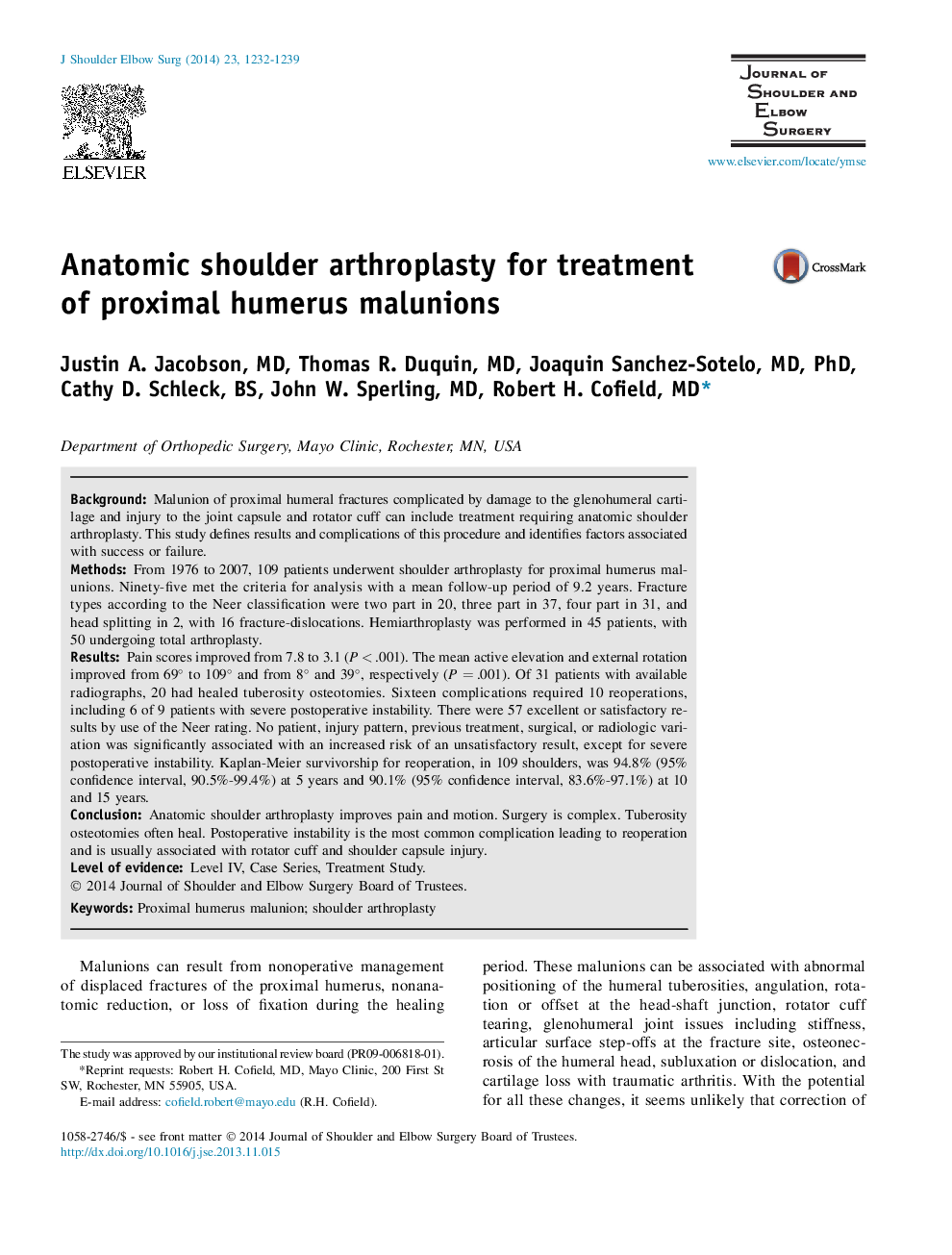| کد مقاله | کد نشریه | سال انتشار | مقاله انگلیسی | نسخه تمام متن |
|---|---|---|---|---|
| 4074125 | 1266999 | 2014 | 8 صفحه PDF | دانلود رایگان |
BackgroundMalunion of proximal humeral fractures complicated by damage to the glenohumeral cartilage and injury to the joint capsule and rotator cuff can include treatment requiring anatomic shoulder arthroplasty. This study defines results and complications of this procedure and identifies factors associated with success or failure.MethodsFrom 1976 to 2007, 109 patients underwent shoulder arthroplasty for proximal humerus malunions. Ninety-five met the criteria for analysis with a mean follow-up period of 9.2 years. Fracture types according to the Neer classification were two part in 20, three part in 37, four part in 31, and head splitting in 2, with 16 fracture-dislocations. Hemiarthroplasty was performed in 45 patients, with 50 undergoing total arthroplasty.ResultsPain scores improved from 7.8 to 3.1 (P < .001). The mean active elevation and external rotation improved from 69° to 109° and from 8° and 39°, respectively (P = .001). Of 31 patients with available radiographs, 20 had healed tuberosity osteotomies. Sixteen complications required 10 reoperations, including 6 of 9 patients with severe postoperative instability. There were 57 excellent or satisfactory results by use of the Neer rating. No patient, injury pattern, previous treatment, surgical, or radiologic variation was significantly associated with an increased risk of an unsatisfactory result, except for severe postoperative instability. Kaplan-Meier survivorship for reoperation, in 109 shoulders, was 94.8% (95% confidence interval, 90.5%-99.4%) at 5 years and 90.1% (95% confidence interval, 83.6%-97.1%) at 10 and 15 years.ConclusionAnatomic shoulder arthroplasty improves pain and motion. Surgery is complex. Tuberosity osteotomies often heal. Postoperative instability is the most common complication leading to reoperation and is usually associated with rotator cuff and shoulder capsule injury.
Journal: Journal of Shoulder and Elbow Surgery - Volume 23, Issue 8, August 2014, Pages 1232–1239
